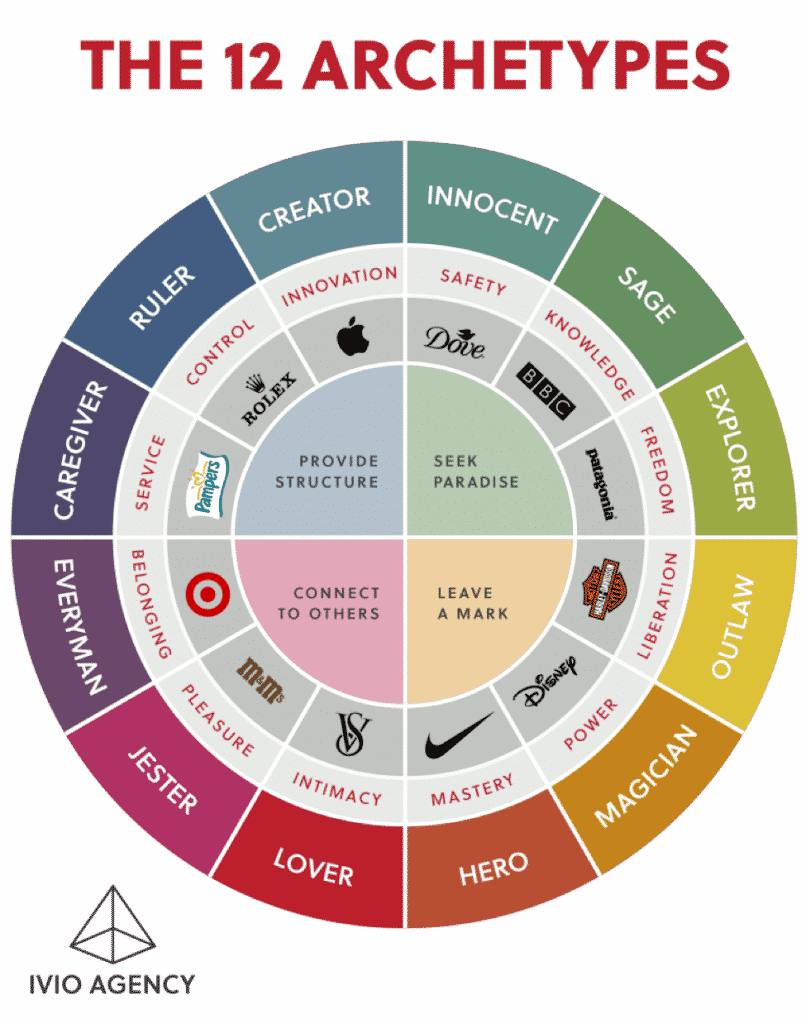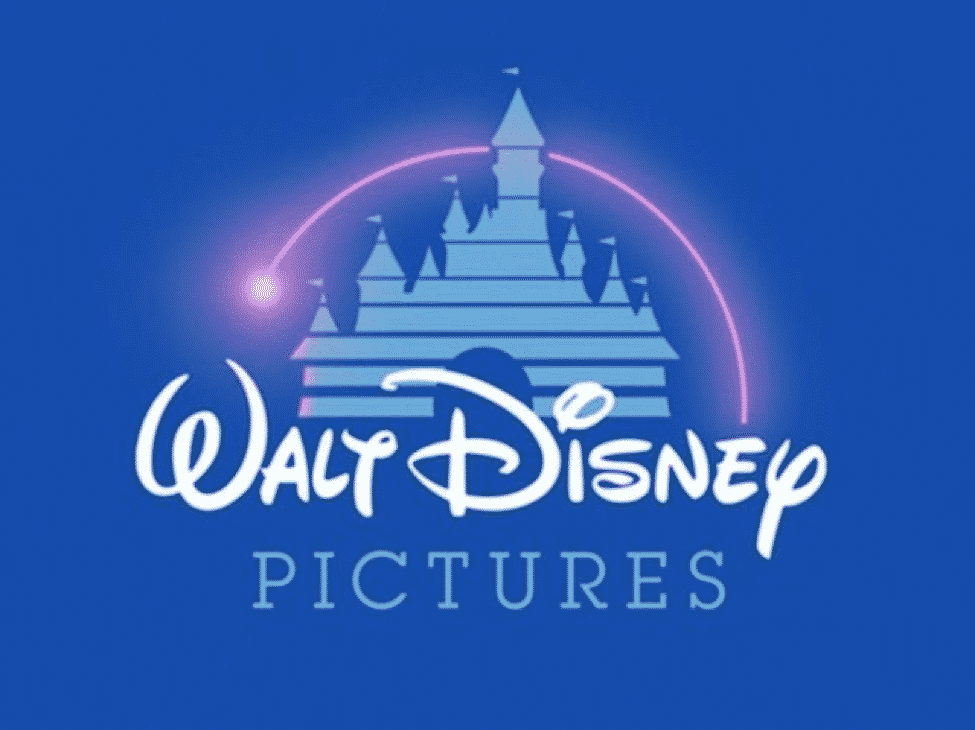Storytelling is the power behind branding. And branding is the power behind a successful business. Face it, you can’t have a successful business without storytelling.
The question is…how can your business provide powerful brand storytelling?
The answer…ARCHETYPES!
Archetypes are a highly effective way to use symbolism and form a deep emotional connection with consumers. From giving your brand that competitive edge you need, to attracting loyal customers while also saving time and money, archetypes can help you nail your brand’s storytelling.
What are Archetypes
Archetypes are actually based on scientific research by Carl Jung that dates back to the 1900s. So, there is actually a method behind all of the madness. Jung developed 12 different archetypes. Each archetype exhibits common personality traits, which can help brands connect better with their audience.
“Forms or images of a collective nature which occur practically all over the earth as constituents of myths and at the same time as individual products of unconscious origin.”
Carl Jung
Maybe you are new to the game and not quite sure what brand archetypes are. No worries! Just know that archetypes are a well-known framework theorizing the idea that humans use symbolism to understand complex concepts. Plato referred to these universal feelings, instincts, and desires as “elemental forms”, but Jung calls them “archetypes”.
With brand archetypes, brands can easily identify with their customers. Every brand needs meaning to succeed and profit. Archetypes do just that. They give a brand meaning and provide the missing link between customer motivation and sales. Think of archetypes like a bridge that leads potential customers into loyal customers. To start, find which primary archetype your brand relates to and use as the base of your brand storytelling.

Let’s explore the different archetypes and talk about some well-known examples.
1. The Caregiver archetype is nurturing and caring. The main goal of the Caregiver is to help others by doing things for others with compassion. This archetype uses calming colors and simple fonts. Brands that accurately represent the Caregiver archetype includes Huggies and Pampers.
2. The Creator archetype represents imagination and innovation, all while inspiring. This archetype uses bold and fun fonts and colors. The Creator’s goal is to create a vision using artistic skill. Crayola and Adobe are just a couple of brands that correctly use the Creator archetype.
3. The Everyman archetype is just as you would think, it is meant to represent everyone! The archetype thrives on friendliness, support, and equality. The main goal of the Everyman is to fit it and belong by blending in and developing solid virtues. Simple colors and fonts are used, similar to the caregiver archetype. Old Navy and Target use the Everyman archetype to welcome all to their stores.
4. The Explorer archetype is adventurous and fearless. Using more natural colors and bold fonts, the explorer makes adventuring exciting. The Explorer’s main goal is to experience an authentic and fulfilling life by seeking out new adventures and journeys. Jeep and Nasa come to mind when thinking about the Explorer archetype. Even Nasa uses the archetype on their Instagram.

5. The Hero archetype represents bravery and courage. Using bold fonts and fun colors, this archetype is used by brands like Gatorade and Nike, who inspire you to always do your best and unleash the hero inside you. The Hero’s goal is to improve the world by being as powerful and strong as possible.
6. The Innocent archetype is youthful and wholesome. The goal of the Innocent is to be happy by doing the right things. This archetype commonly uses bright spring colors and fun fonts. Brands like Aveeno and Coca-Cola know how to capture the Innocent archetype in their marketing.
7. The Jester archetype is of course playful and fun. Adding humor to the brand, this archetype also uses bright colors and fun fonts. The Jester’s goal is to have a great time by making jokes and brightening up the world with joy. Brands that stick out when thinking of the Jester archetype include Old Spice and M&M.
8. The Lover archetype is passionate and intimate. The goal of the Lover is to experience relationships in life by showing passion and appreciation to those they love. Common colors used to represent this archetype includes pinks and reds with delicate fonts. Godiva and beauty brands often use the Lover archetype.
9. The Magician archetype is full of magic and power. Using bright pastels and fancy fonts, the magician archetype inspires that magical power inside you. The Magician’s goal is to make dreams come true by developing a vision and living it. Disney has the Magician archetype down pat, especially with their logo. They use a bright blue pastel as the background, add in a magical kingdom, and a fun font.

10. The Outlaw archetype is independent and free. The main goal of the Outlaw is to disrupt and destroy things that are not working in society. This archetype uses bold colors such as oranges and reds along with strong fonts. Harley Davidson and Virgin use the Outlaw archetype perfectly with their brand.
11. The Ruler archetype is reserved and strong. The Ruler’s goal is to create a prosperous life by exerting true leadership. This archetype uses elegant colors like gold and silver along with sleek fonts. High-end luxury brands like Louis Vuitton and BMW use the Ruler archetype.
12. The Sage archetype is full of intelligence and experience. The main goal of the Sage is to better understand the world by seeking out knowledgeable information. The archetype uses neutral colors with hints of greens and blues along with simple fonts. Brands that offer educational information like Google use the Sage archetype.
Why Use Archetypes?
Using archetypes can only strengthen your brand. Even if you are unsure about using them, the reward is much higher than the risk. Here are the four reasons your brand should start using archetypes in your brand’s marketing.
1. Give Your Brand a Competitive Edge
How can you get that edge and stand out among your competitors? By creating a lasting impression! It is a competitive world out there and you only have a few seconds to grab the attention of your consumer.
Think about it, when there are two brands to choose from, you are going to go with the one who you relate to most. Your brand can easily relate to consumers with archetypes. This is because archetypes can leverage the intuitive subconscious underpinnings of storytelling, becoming familiar to all cultures.
Let’s take a look at Crayola. They use the Creator archetype and use it well. When you are in the mood to become creative and need some markers or crayons, Crayola is the first to come to mind for a reason.
2. Identify a Clear Brand
A reason your brand could come in second place to a competitor is that it comes across as a confused brand. Using archetypes can help give your brand that clear and consistent message. Your consumers will know exactly what your brand represents. When choosing an archetype for your brand and using the right language, images, colors, and fonts, your consumers will understand your brand. With archetypes, you can quickly and clearly convey the meaning of your brand.
For example, Harley Davidson uses images and words to convey their Outlaw archetype. This allows consumers to understand that buying a Harley helps you be free.
3. Attract Loyal Customers and Top Talent
Archetypes allow your brand to deliver the experience that consumers are yearning for. This not only attracts consumers to your brand but also keeps them coming back. Why? A clear and consistent message using archetypes is most likely going to resonate with consumers.
Where do you start? Focus on your brand’s values and characteristics. Convey these in your messages and remember, multiple impressions are needed to stick in the memory of consumers.
A clear brand identity also attracts talent. Employees want to work for a brand that is successful and knows what they stand for. Plus, thanks to archetypes, training new team members and acclimating them to your brand becomes a breeze too.
Look at Target for an example. They use the Everyman archetype and have no problem adding team members. Happy and friendly people WANT to work there. Employees like the inclusivity of everyone. Consumers know they will get the help they need when they see that red shirt in the store, and a smile.
4. Save Time and Money
Let’s face it…when all is said and done, everything comes down to either saving time and money, and archetypes can help with that, too!
Remember, archetypes give your brand a clear and creative message, making it easy to create content for your brand. You’ll end up spending less time thinking about what to say and how to say it and instead focus on your consumers.
Need a little more direction adding archetypes to your brand? A branding workshop can help you get exactly where you need to be with archetypes to start your brand storytelling and start connecting with consumers.
